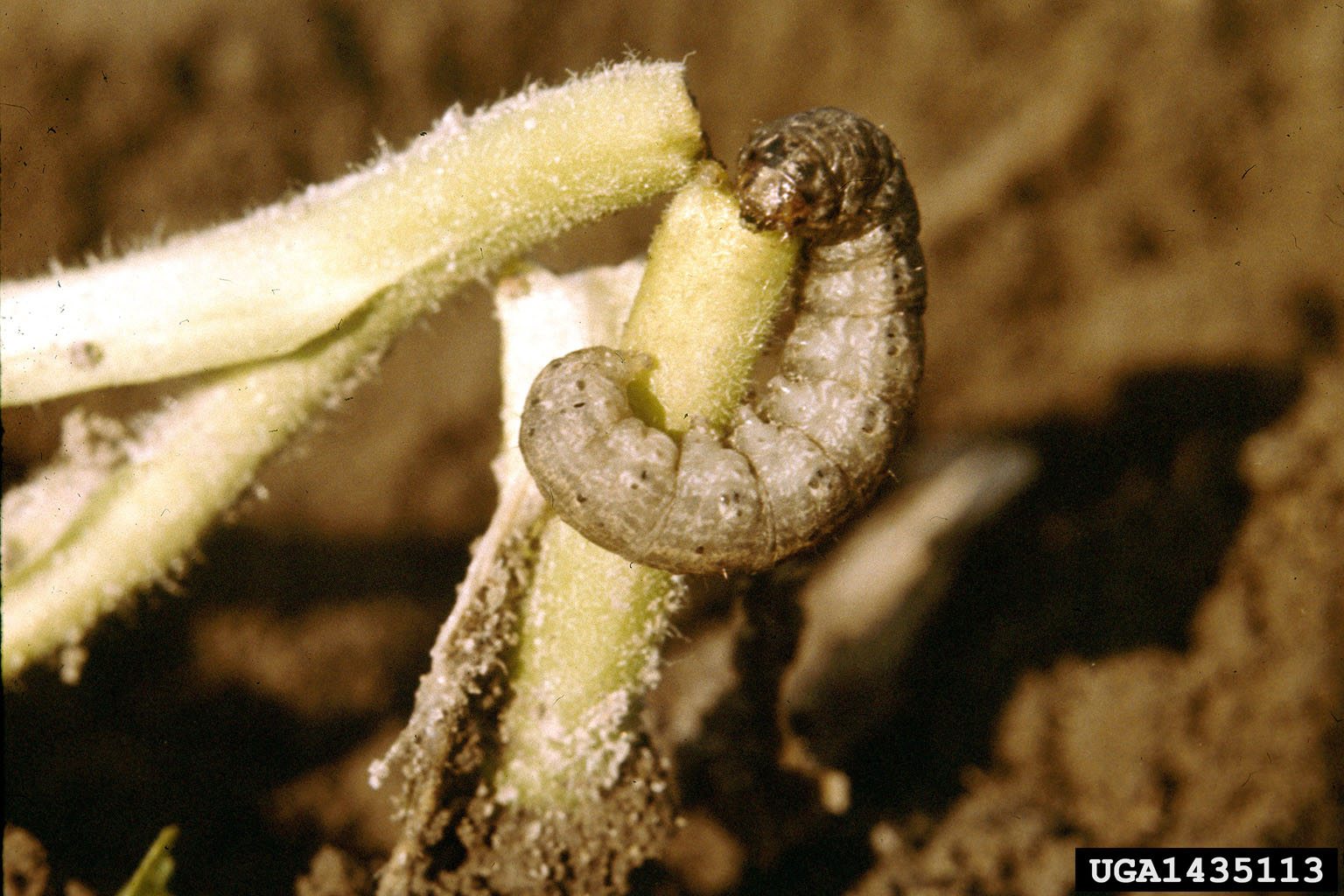How To Get Rid Of Cutworms – Dealing With Cutworm Damage


Cutworms are frustrating pests in the garden. They are the larvae (in caterpillar form) of night-flying moths. While the moths themselves do no harm to crops, the larvae, called cutworms, destroy young plants by eating the stems at or near ground level. If cutworms are attacking your seedlings, you’ll want to know how to get rid of cutworms. Control of cutworms is possible with a little know-how. Read on for more information on how to kill cutworm pests.
Cutworm Damage in the Garden
Identifying cutworms is not as easy as you might think since different species are different colors. Some are black, brown, grey or tan while others can be pink or green. Some have spots, other stripes, and even soil hues. In general, the cutworms won’t get more than 2 inches (5 cm.) long and if you pick them up, they curl into a C shape. Cutworms aren’t that easy to spot anyway since they hide during the day in the soil. At night, they come out and feed on the base of plants. Some types of cutworms climb up to feed higher on plant stems and the damage will be higher. In all cases, the largest larvae do the most cutworm damage.
About Cutworm Control
Cutworm control begins with prevention. Cutworm issues are usually worse in areas that haven’t been tilled. Plowing or cultivating the soil well is a big help since it kills the larvae overwintering in soil. Taking out weeds and early planting also help to prevent cutworm infestations. Picking up plant detritus is another good option since the eggs that hatch into cutworms are laid on dead plant material. If you follow up prevention with careful monitoring, you are on your way to limiting cutworm damage. The earlier you discover the pests, the easier control of cutworms becomes since it’s easier to kill cutworm pests when they are under ½ inch (1.25 cm.) long.
How to Get Rid of Cutworms
If you are wondering how to get rid of cutworms, start with nontoxic methods like plucking out and crushing the larvae or plunging them into soapy water. And when you remove plant detritus and destroy it, you will also remove and destroy any cutworm eggs laid there. One way to keep cutworms from destroying your seedlings is to create a barrier to keep cutworms out. Place aluminum foil or cardboard collars (think toilet paper rolls) around transplants. Be sure the barrier extends into the soil to keep burrowing worms out. You can use also use chemical pesticides to kill cutworm pests, although this should be a last resort. If you have to use pesticides, apply the product in the evening since cutworms come out for feeding. Also, consider using organic pesticides to kill cutworms instead. A wash of bleach-free dish soap and water on your plants can also help to stop cutworms from attacking the plants. Another approach is the use of Bacillus thuringiensis (Bt), a naturally occurring bacterium that target many caterpillar-type pests. It can be an effective and environmentally friendly way to treat cutworms in the garden.
Sign up for the Gardening Know How newsletter today and receive a free copy of our e-book "How to Grow Delicious Tomatoes".

Teo Spengler is a master gardener and a docent at the San Francisco Botanical Garden, where she hosts public tours. She has studied horticulture and written about nature, trees, plants, and gardening for more than two decades, following a career as an attorney and legal writer. Her extended family includes some 30 houseplants and hundreds of outdoor plants, including 250 trees, which are her main passion. Spengler currently splits her life between San Francisco and the French Basque Country, though she was raised in Alaska, giving her experience of gardening in a range of climates.